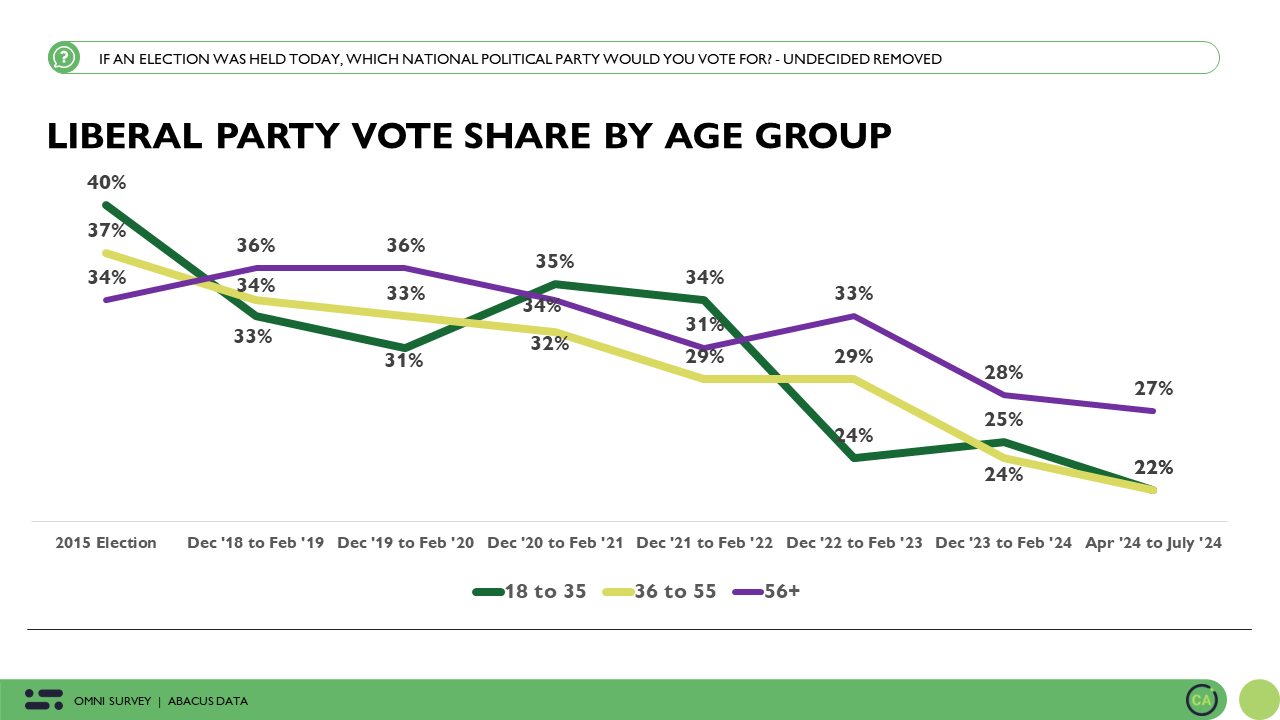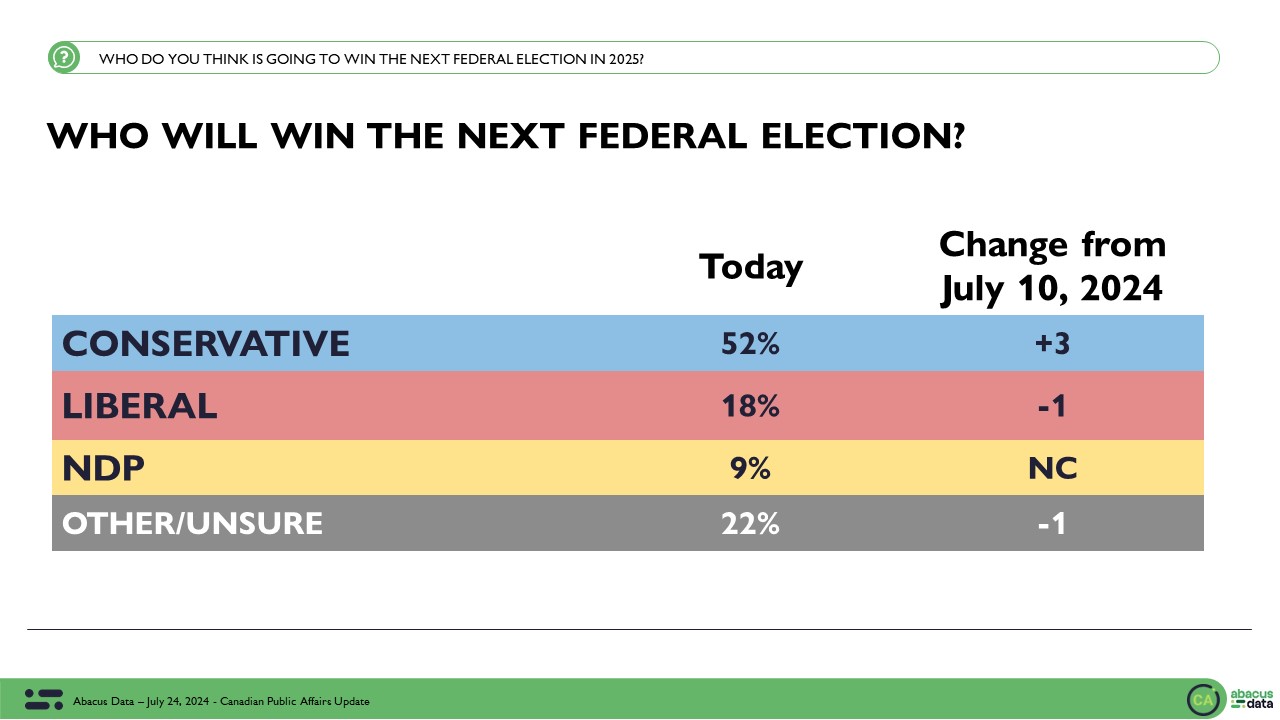No regrets about election outcome, say Albertans in new poll
May 14, 2015

We have just completed a major, in depth survey among 1,000 residents of Alberta. The first results are described here and in a release on Saturday, while more of the data will be available in the coming weeks.
WHO DID WHAT?
Somewhat remarkably, given the history of the province, the NDP victory was not built on deep divisions across the province.
Instead a fairly broad consensus developed. The New Democrats got the most votes among both women and men, across all income and education levels. They were first among both private sector and public sector employees, and among homeowners and renters too.
The NDP won the most votes in urban Alberta, but trailed the Wildrose by 6 points in rural Alberta. The Wildrose also was the leading party among those who are self employed, again with the NDP second. The PC’s finished a distant third among rural and self-employed voters.


The NDP could not have won this election without a collapse of support for the Progressive Conservatives. Our survey reveals that half of those who voted PC in 2012 left the party in this election. These voters were almost twice as likely to move to the NDP (31%) rather than the Wildrose (17%).
The Wildrose Party lost a third of those who voted for that Party in 2012, with more drifting to the NDP (19%) than to the PC’s (13%). The NDP held 93% of its support base from 2012.

Federal Conservatives will watch carefully what this election result portends for the fall federal campaign. Among those who voted federally for the Conservatives in 2011, 22% voted NDP provincially and 34% supported to the Wildrose. Only 40% supported Jim Prentice and the PCs.
HOW THEY FEEL?
The word cloud below illustrates the responses to a question asking for a single word expression of reactions to the result. The responses reveal a population that expresses more surprise, happiness and hopefulness than dismay or fear.
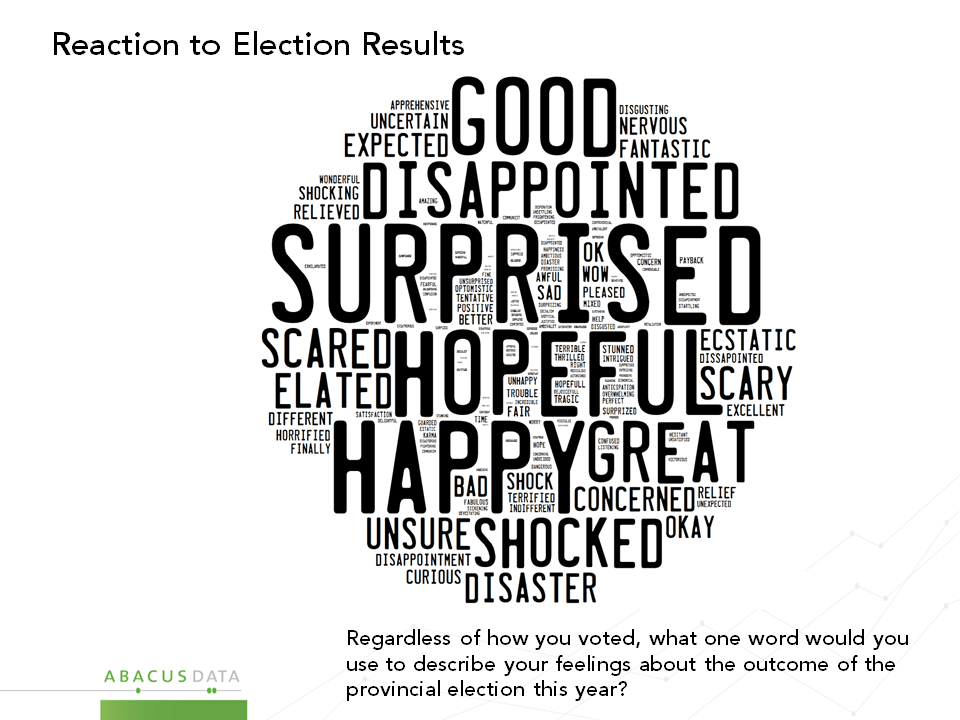
A related question asked people to indicate whether they were happy, unhappy or “accepting” of the result. 17% said they were delighted, another 20% happy, and 40% accepting. Only a quarter of those surveyed indicated either that they were “unhappy” (15%) or “upset” (9%).
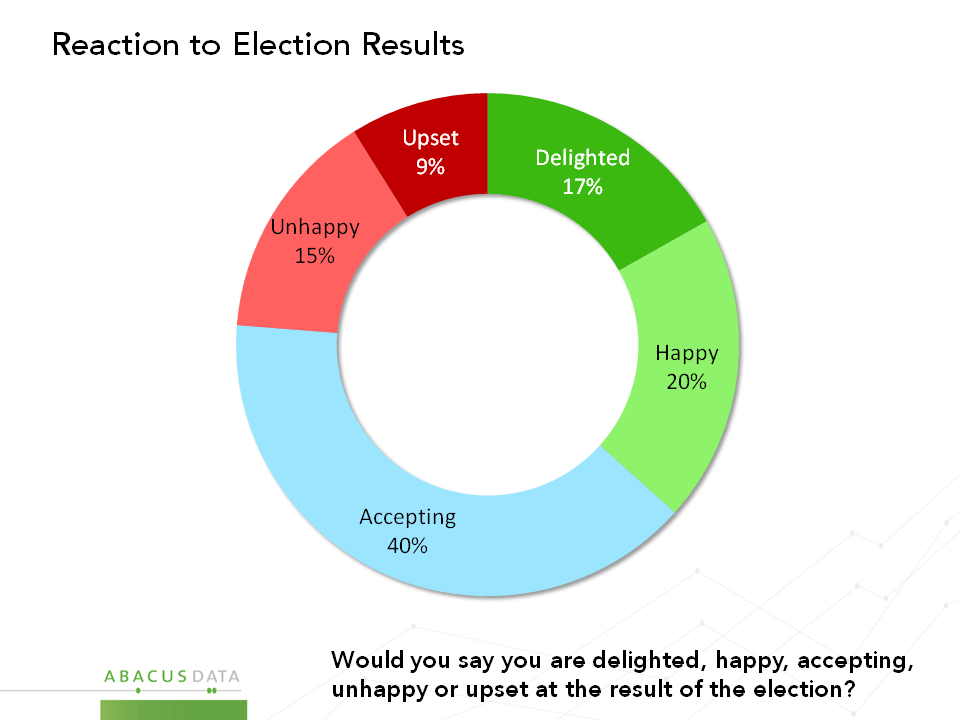
Few voters (24%) expect the NDP to provide worse government for the province, while 52% expect the Notley administration will do a better job. Dissatisfaction with the incumbents was so high that only 54% of PC voters think the NDP will turn out to be worse than the Conservatives. Only 44% of Wildrose supporters say the NDP will do a worse job than the Conservatives.
That a broad cross section of Alberta voters could vote NDP may have seemed unlikely in the past, but this breakthrough has the potential to change the paradigm in the future. Fully 73% say that that “if the NDP does a good job, I could see myself voting for them in the next election”. This includes 47% of those who voted PC this year, and 49% of those who voted Wildrose.
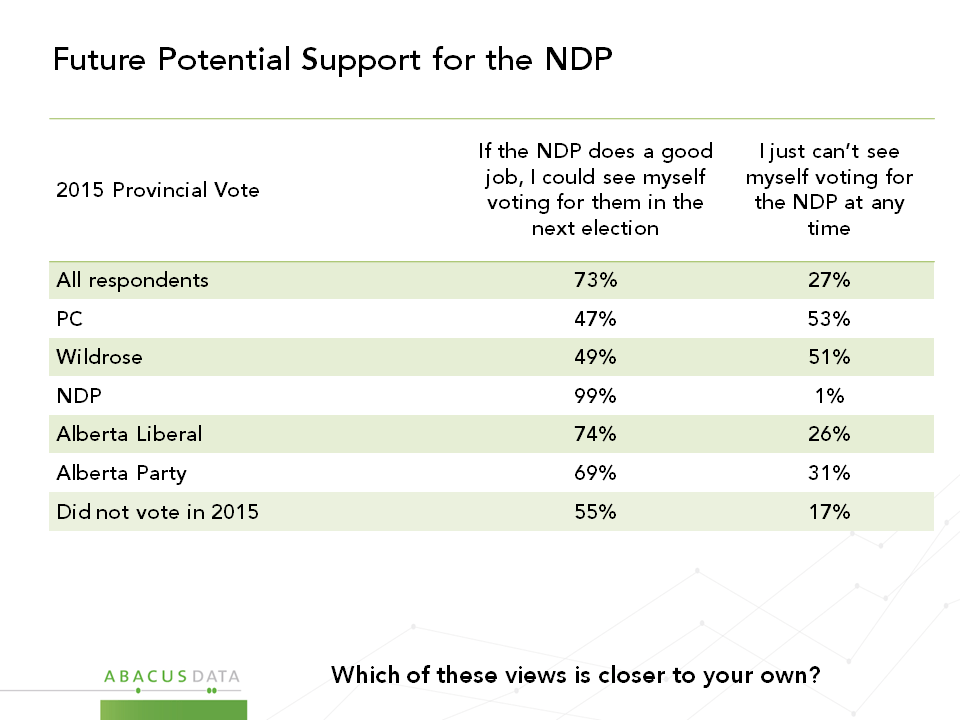

In our next release, we will explore what Albertans say this election turned on. From these results, a few things that are evident.
First, this was a sweeping consensus for change rather than a divisive result. Few voters are unhappy, many are hopeful. Older voters are more anxious, but in this election, their preferences did not carry the day.
Second, Alberta has long been reputed to be quite conservative and hostile to left of centre politicians, but these results paint a more nuanced picture. That three of four say they could see themselves voting NDP if the Notley government performs well indicates that they think good performance is possible, regardless of partisanship.
Undoubtedly, many of these voters will be looking for pragmatic rather than ideological choices, and in a difficult economic and fiscal context, maintaining this level of positive feeling among voters will not be easy. But the new Premier starts with much more “benefit of the doubt” than might have been expected. This was not a “hold your nose” choice nor is it characterized as a “devil you don’t know” outcome for the large majority of Albertans.
METHODOLOGY
Our survey was conducted online with 1,000 Alberta residents aged 18 and over from May 6 to 11, 2015. A random sample of panelists was invited to complete the survey from a large representative panel of Albertans, recruited and managed by Research Now, one of the world’s leading provider of online research samples.
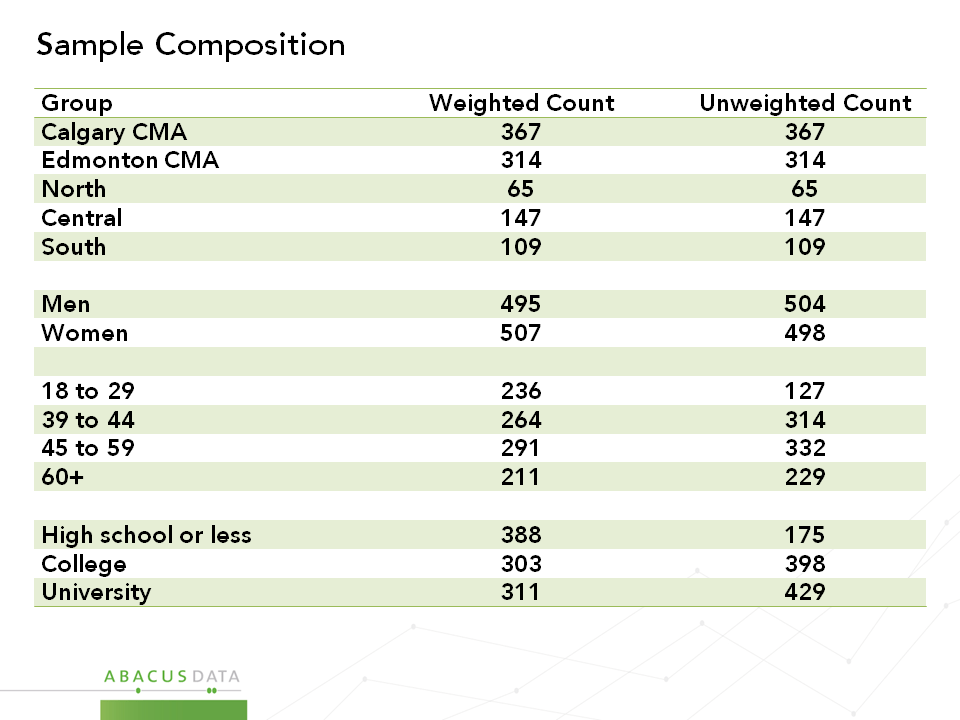
The Marketing Research and Intelligence Association policy limits statements about margins of sampling error for most online surveys. The margin of error for a comparable probability-based random sample of the same size is +/- 3.1%, 19 times out of 20. The data were weighted according to census data to ensure that the sample matched Alberta’s population according to age, gender, educational attainment, and region of the province. Totals may not add up to 100 due to rounding.
Abacus Data Inc.
We offer global research capacity with a strong focus on customer service, attention to detail and value added insight. Our team combines the experience of our Chairman Bruce Anderson, one of Canada’s leading research executives for two decades, with the energy, creativity and research expertise of CEO David Coletto, PhD. For more information, visit our website at http://www.abacusdata.ca/



